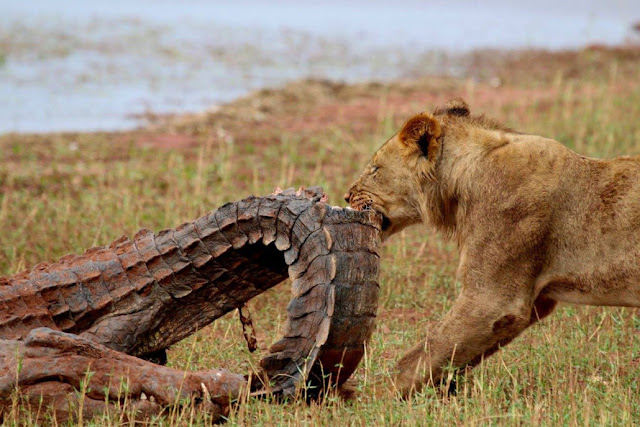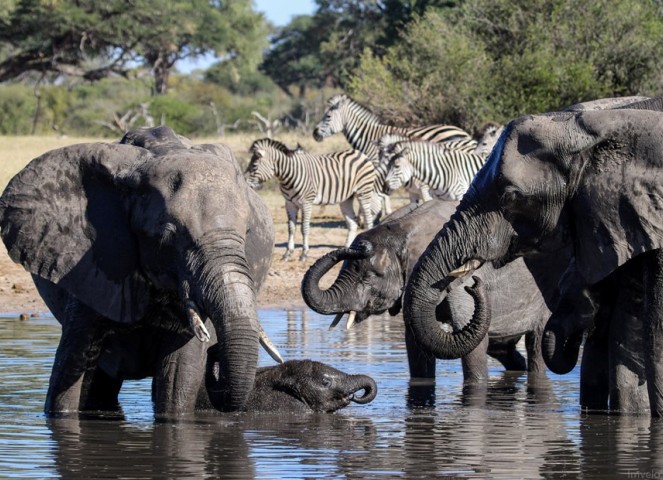It's been a pretty lonely time in the safari camps, and the only visitors seen are the wild ones, probably wondering where everyone is. But for this time of the year, the visits are usually more frequent, as different species switch their seasonal routes to the dry season. Even in Victoria Falls, the regulars are increasing in numbers – kudu, warthogs, baboons, and sounds of hyenas and lions in the distance, and even leopards!
Tourism in Zimbabwe will be opening up next week (see this post for more info Victoria Falls Zimbabwe Covid-19 update), but here's what you have to look forward to in Kariba and Mana Pools.
 |
| Lion hunting crocodile in Matusadona National Park (photo - Changa Safari Camp) |

